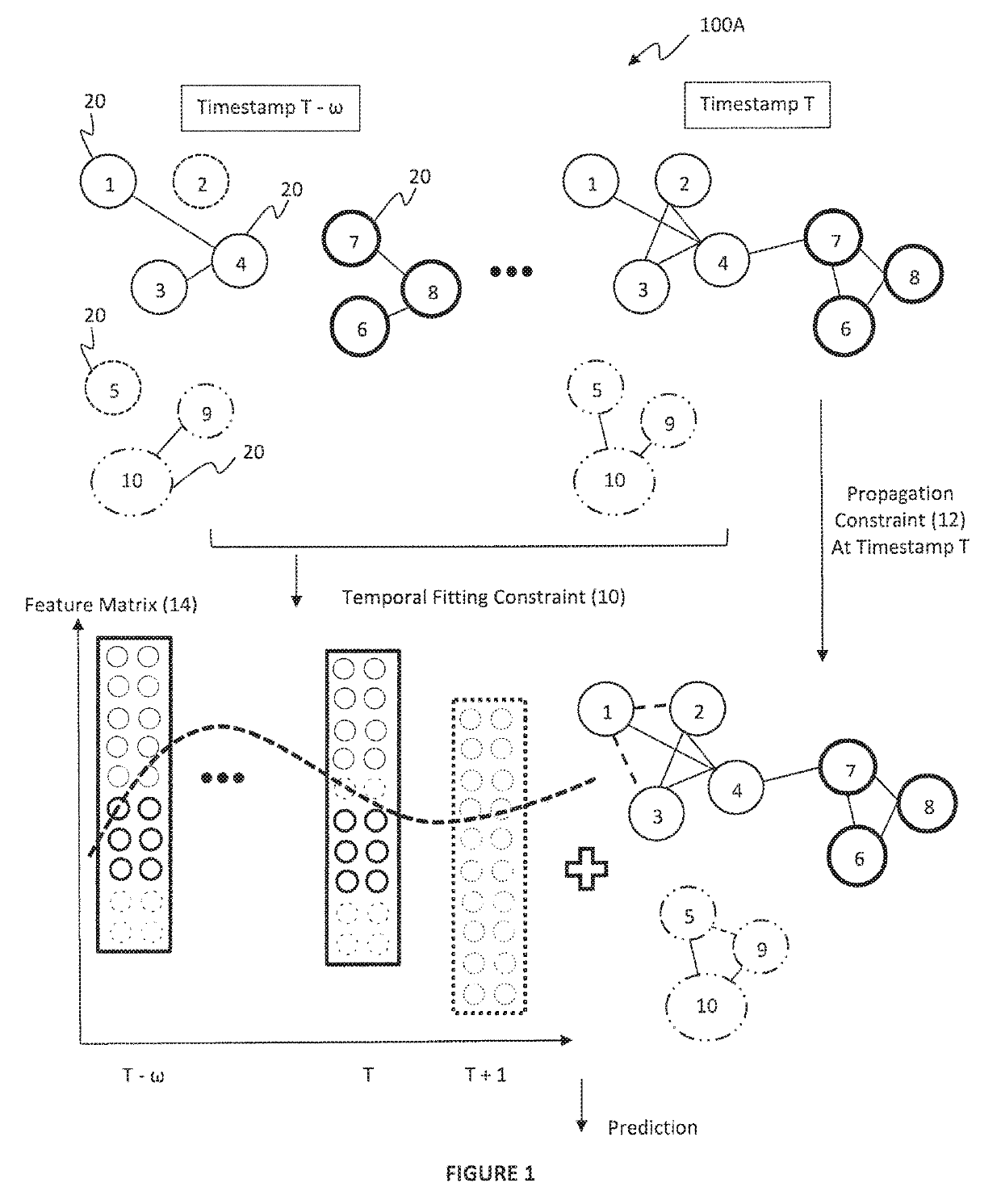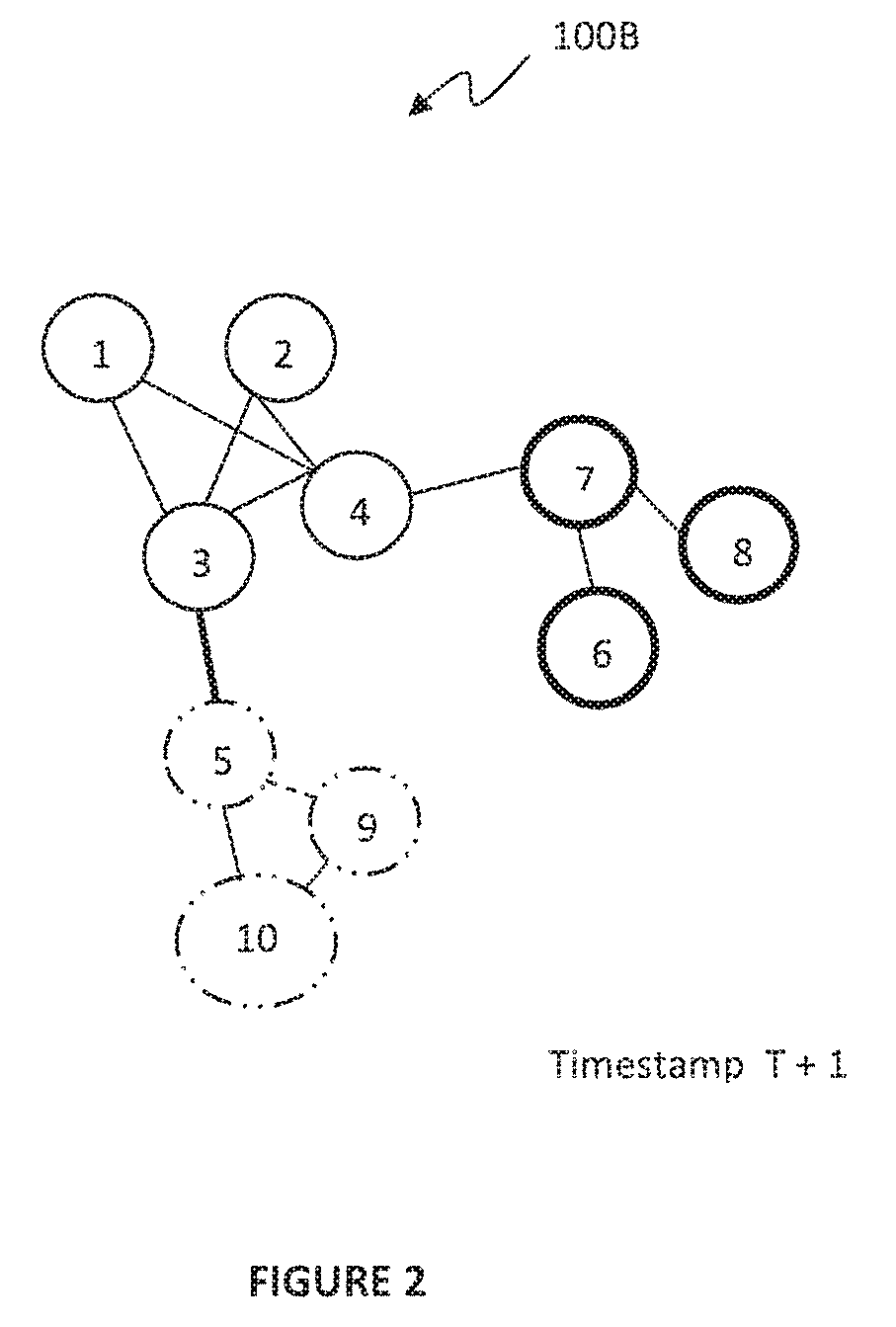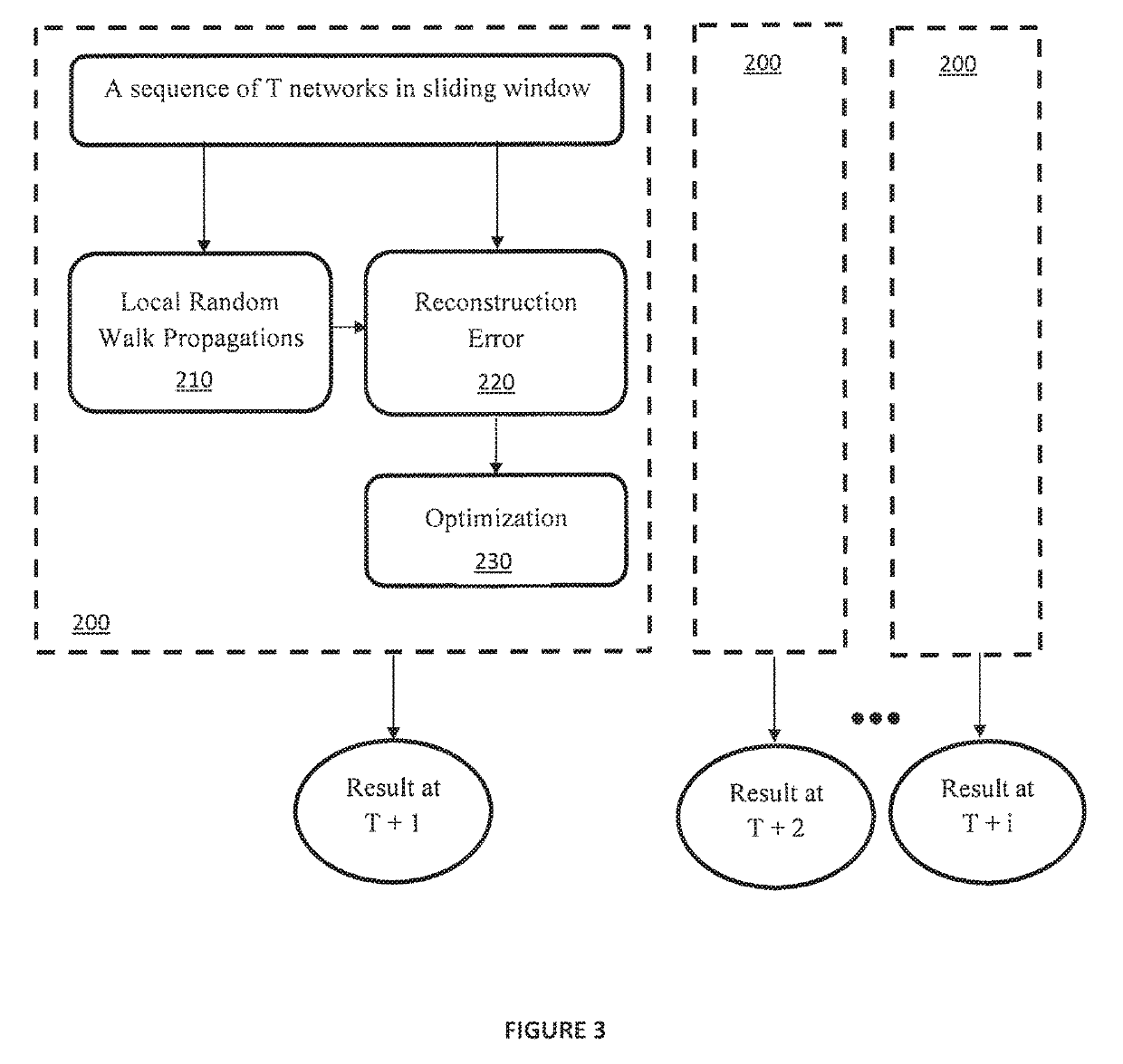Link prediction with spatial and temporal consistency in dynamic networks
a dynamic network and link prediction technology, applied in the field of dynamic networks, can solve the problems of often unifying these two factors, and achieve the effect of reducing the time complexity of finding neighbors
- Summary
- Abstract
- Description
- Claims
- Application Information
AI Technical Summary
Benefits of technology
Problems solved by technology
Method used
Image
Examples
Embodiment Construction
[0018]In the exemplary embodiments of the present invention, dynamic networks are introduced. One aspect of dynamic networks is link prediction. Models have been developed to predict links that can emerge in the immediate future from the past evolution of the networks. Link prediction is based on two factors. The first factor is that a node is more likely to form a link in the near future with another node within its close proximity, rather than with a random node. The second factor is that a dynamic network usually evolves smoothly.
[0019]In the exemplary embodiments of the present invention, a link prediction model is presented with spatial and temporal consistency (LIST), to predict links in a sequence of networks over time. LIST characterizes network dynamics as a function of time, which integrates a spatial topology of a network at each timestamp and the temporal network evolution. LIST has at least two advantages compared to conventional techniques. The first advantage is that ...
PUM
 Login to View More
Login to View More Abstract
Description
Claims
Application Information
 Login to View More
Login to View More - R&D
- Intellectual Property
- Life Sciences
- Materials
- Tech Scout
- Unparalleled Data Quality
- Higher Quality Content
- 60% Fewer Hallucinations
Browse by: Latest US Patents, China's latest patents, Technical Efficacy Thesaurus, Application Domain, Technology Topic, Popular Technical Reports.
© 2025 PatSnap. All rights reserved.Legal|Privacy policy|Modern Slavery Act Transparency Statement|Sitemap|About US| Contact US: help@patsnap.com



